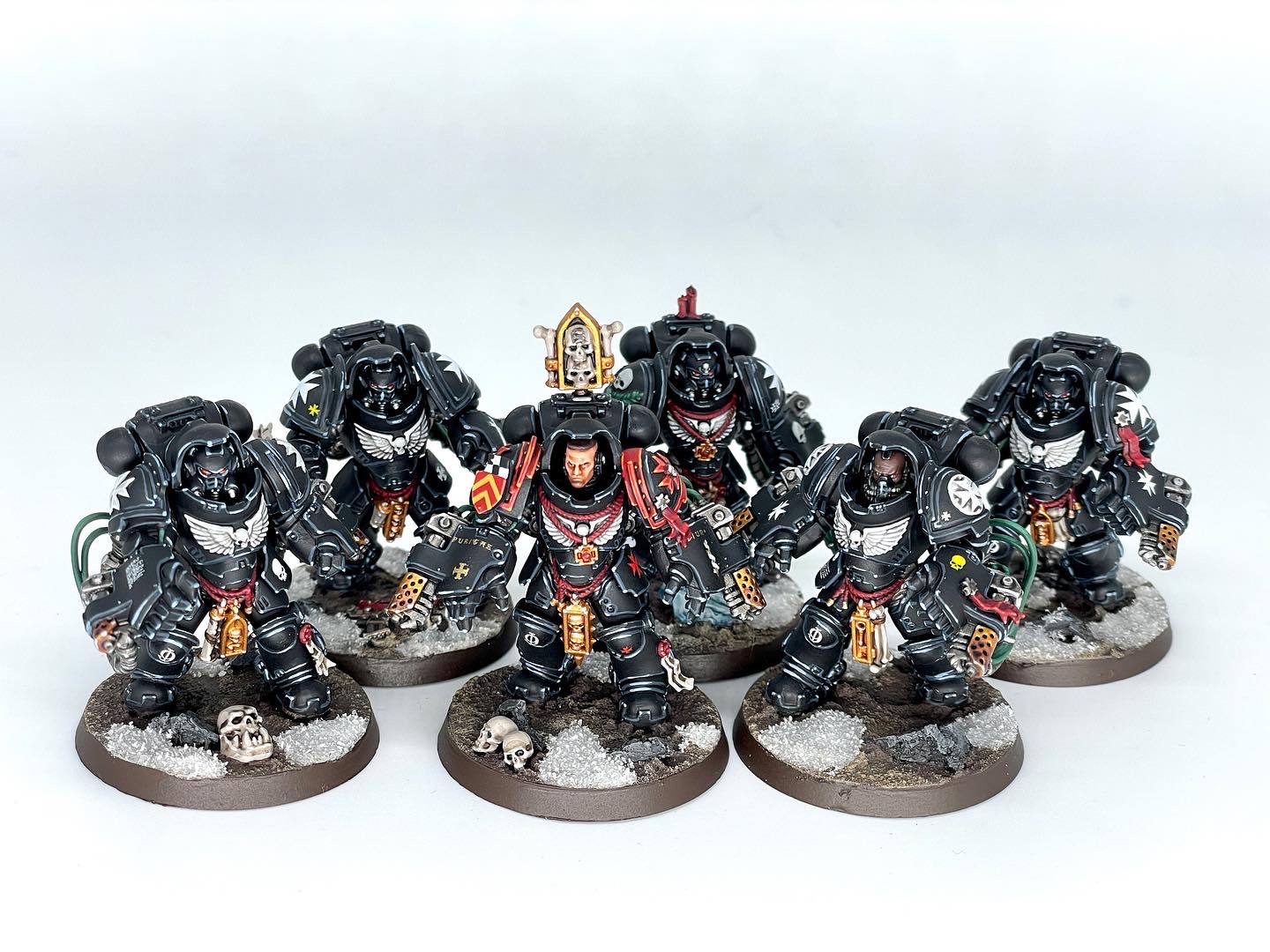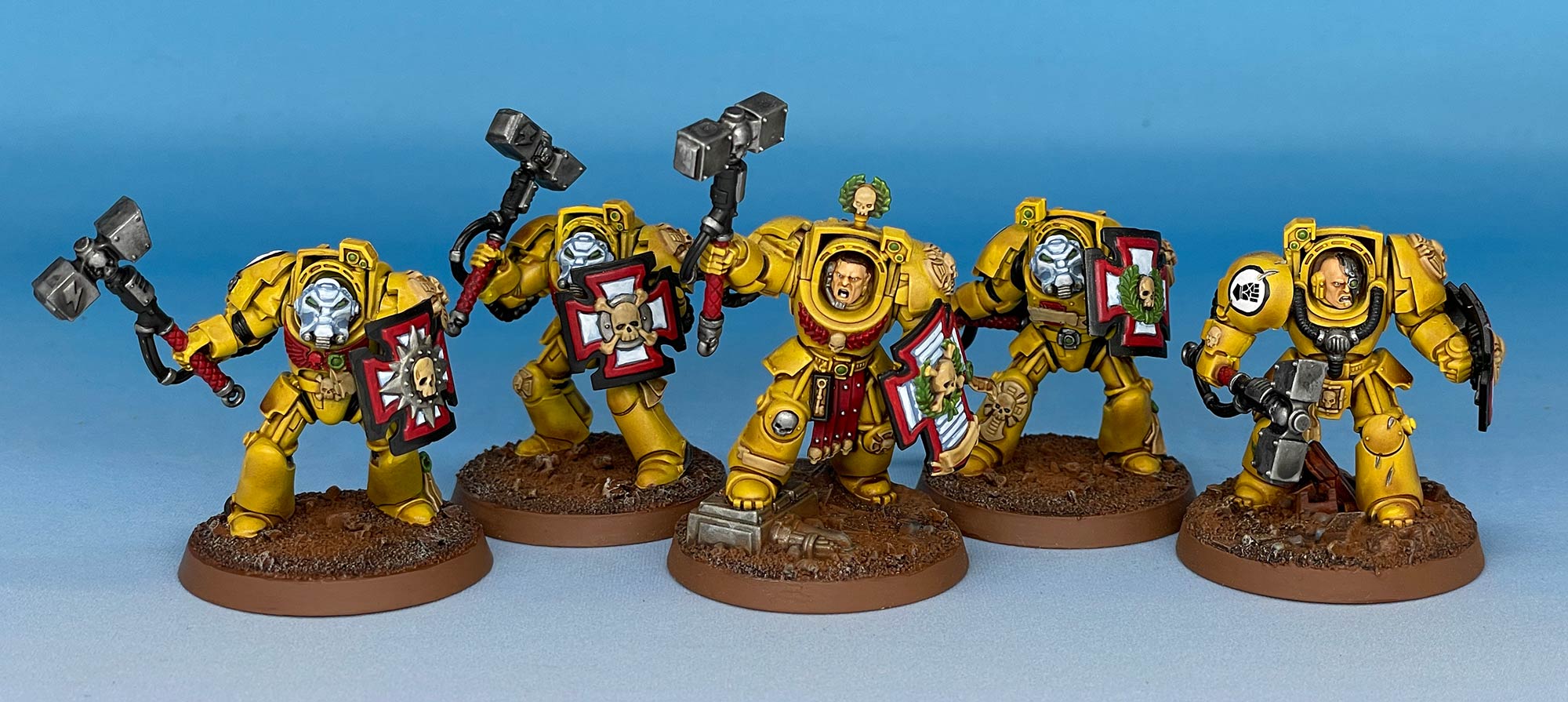This week’s Hammer of Math takes a look at the various bonuses discussed about Warhammer 40k 10th Edition and examines where the ‘break even’ points are located.
Long-term readers of this column are familiar with the concept of gatekeeping rolls, but as a refresher dice rolls in Warhammer 40k are divided into two different types. Driving rolls are those that determine the magnitude of a success; the two most familiar are attacks and damage. Gatekeeping rolls are those that must be passed in order for the test to be successful; these are hit, wound, save, feel no pain, and other rolls like Psychic Tests. Normally these rolls are independent, meaning that the order of rolling doesn’t actually matter. There is no impact on the outcome if you roll hit, wound, and then save or if you roll save, then hit, then wound. You could simply roll all three checks at the same time and the probability of success is the same.
Recently Games Workshop has been revealing a variety of effects, such as Devastating Wounds allowing mortal wounds to be inflicted on a Critical Wound (nominally a wound roll of 6), or Lethal Hits effects allowing hits to automatically wound on a Critical Hit (usually a hit roll of 6). Sustained Hits explode on a Critical Hit, while Twin-linked allows wound rolls to be re-rolled. While GW hasn’t explicitly stated as such it seems reasonable to think that re-rolling hits would also be a logical ability, we also know the Anti-X ability will change the target number for a Critical Wound.
With all of these options presumably players will be in situations where they need to make a choice. Perhaps players will need to select a particular special weapon, or select a single Independent Character to attach to a squad. When making a choice it’s important to examine the equilibrium points between two abilities. For example, at what point is Twin-linked a better choice than Lethal Hits?
The Synergistic Effect of Re-Rolls
One of the reasons that GW is presumably reducing the number of re-rolls in the game is because of the multiplicative effect that occurs when a re-roll is combined with an ability that triggers off of a particular die roll. A critical result that activates on a 6 will, by definition, activate 16.7% of the time. When a re-roll is incorporate that increases the probability of the activating number by the probability of a re-roll. Re-roll 1s and the ability will trigger 16.7% more often (19.4% instead of 16.7%). Re-roll values of 1-3 and the ability triggers 50% more often (25.0% instead of 16.7%).

Lethal Hits vs Twin-Linked
The probability of a Lethal Hit attack wounding the target is the sum of two probabilities. The first probability is that of the critical hit (normally 1 in 6). The second is the probability of a non-critical hit multiplied by the probability of wounding the target. When comparing Lethal Hits and Twin-Linked, the breaking point is a balance between the wound and hit targets. As the hit target becomes more difficult, the impact of Lethal Hits becomes more prevalent since there are simply fewer successful hits to re-roll. Getting automatic wounds on critical hits also becomes more effective as the probability of wounding decreases.
For attacks with a hit roll of 2+ through 4+ Twin-Linked is equal to or better than Lethal Hits against anything requiring a wound roll of 5+ or better. With a hit roll of 5+ the equilibrium point is a wound roll of 4+, meaning that Twin-Linked is better only against wound rolls of 2+ or 3+. For attacks with a hit roll of 6+, Lethal Hits is always better.

Sustained Hits vs Re-rolling Hits
With the Sustained Hits keyword, weapons that achieve a Critical Hit will get two hits instead of one. Because multiple hits can be inflicted the best way to compare Sustained to re-rolling hits is to look at the average hits per attack. For example for a hit roll of 2+ the average number of hits is 1 (1 in 6 probability of hitting twice added to 4 in 6 probability of hitting once). When compared to re-rolling hits, the Sustained ability is only better for hit roll of 2+ and 6+. Should the weapon somehow get Critical Hit rolls on a 5+, or the Sustained Hits value be 2 or greater, then Sustained Hits becomes superior in every situation.
Lethal Hits vs Sustained Hits
Since the Lethal and Sustained effects both trigger on a Critical Hit, it makes sense to examine what the equilibrium point would be where one is more effective than the other. Regardless of the hit roll, the equilibrium point between Lethal Hits and Sustained hits is a wound roll of 4+. Sustained Hits 1 is more effective against wound targets of 2+ or 3+ while Lethal Hits is more effective against wound targets of 5+ or higher. This is unaffected by changing the Critical Hit target. For Sustained Hits 2 the equilibrium point shifts to a wound roll of 5+, meaning that Lethal Hits is only better against targets with a wound target of 6+.

Wrapping Up
Army building has always been an essential part of Warhammer 40k, and it’s evident that this is equally important in 10th Edition. Understanding the impact of the various abilities and the tipping points between options will be essential for making an effective fighting force. This is particularly true when looking at abilities which trigger on the same critical effect.
Thanks for reading! If you have any questions or comments feel free to drop us a note in the Comments below or email us at contact@goonhammer.com. That’s also the best way to suggest topics for future articles.


